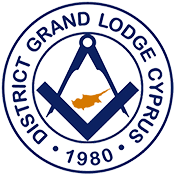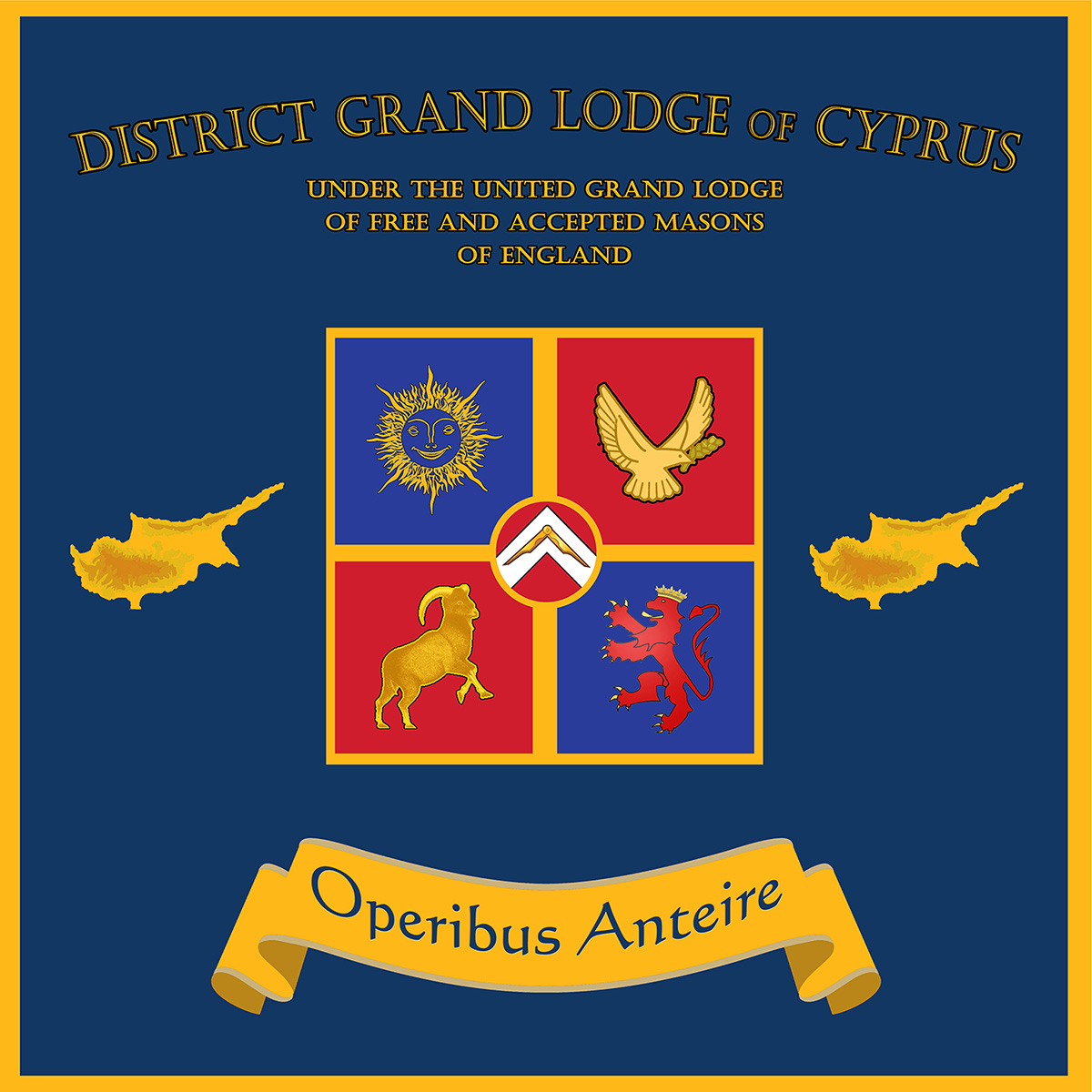Banner Design
The beautiful design of the Banners was undertaken by W Bro Dr Antranik Ashdjian, DistGMemO, DistGStB, and were presented to the following delegations of the Lodges that attended; St Paul’s Lodge No 2277, St George’s Lodge No 3135, Lord Kithener Lodge No 3402, Lusignan Lodge No7453, Dionysos Lodge No 9716, King Tefkros Lodge No 9786, Phoenix Lodge No 9817, Zenon Lodge 18 No 9818, St Hilarion Lodge No 9851, and Buffavento Lodge No 9996 as well as to the Senior Grand Warden of the Grand Lodge of Greece V W Bro Pavlos Sarof who is also a member of King Tefkros Lodge No 9786.
- Cyprus Mouflon.
- The Lion of the medieval kingdoms of Cyprus.
- The “Cyprus Aeterna”.
- The Dove bearing an Olive branch.
The Cyprus Moufflon
The Cyprus Moufflon is the national animal of the Island also known as Agrino or Cyprus Mountain Goat is only found in the mountainous forest of Paphos.
It was bought over to the Island from Asia by the prehistoric people who lived here around 9,000 to 8,000 BC. The Moufflon is used as a logo and insignia on bank-notes, coins, stamps and formally Cyprus Airways.
The Lion of the Medieval Kingdoms of Cyprus
Symbolic or decorative designs and pictures on shields were already common with many peoples in the ancient times. The medieval times brought a refinement of this custom and through the Crusades it came to the Eastern Mediterranean and thus to Cyprus. Cyprus was first confronted with medieval heraldry by Richard the Lionheart and saw a good deal more of it during the reign of the Templars (1191-1192) and the Lusignans, as well as the Venetians (1489-1571).
Cyprus Aeterna
In the late 1950’s the British Colonial Government of Cyprus deputed Sigmund Pollitzer to decorate the foyer of the new Public Relations Office in Nicosia, which with Independence in 1960, came to house the House of Representatives. He produced a huge mural entitled “CYPRUS AETERNA”, consisting of 84 plates and 171 tiles locally made. His inspiration derived from the history of the Island. A smiling benevolent Sun was designed in the middle and around it a conglomeration of points of historical references from antiquity to the 1950’s, the artist’s conception of a multicultural Island.
The Dove bearing an Olive branch
Arriving to modern days, the very Masonic “Dove bearing an Olive Branch” is emblematic of Cyprus post-independence era. The dove has always been an emblem of Peace. Interestingly, the Dove has survived the Island’s partition, being accepted by all the Communities on the Island as a symbol of the Island, and will ever continue to symbolise the Island.
Golden compasses
In the centre of the banners is a pair of golden compasses extended. A very well-known Masonic symbol.
Cyprus Gold
There is no other country which boasts its own map as its flag. The best description of the Golden Island can be given by reading the translation of a poem by Leonides Malenis in the 1960’s and made into a song by the famous Greek musician Mikis Theodorakis.
The motto “Operibus Anteire”
The motto chosen by our District Grand Master “Operibus Anteire” is Latin for “Leading the way with deeds”.
From this day on, let this banners be proudly displayed at all District meetings and on other occasions when called upon by District Grand Lodge.
Finally Brethren may the Great Architect of the Universe give our District Grand Master Health and Strength to rule over us for many years to come and may he preserve our banners until time with us shall be no more.”



















